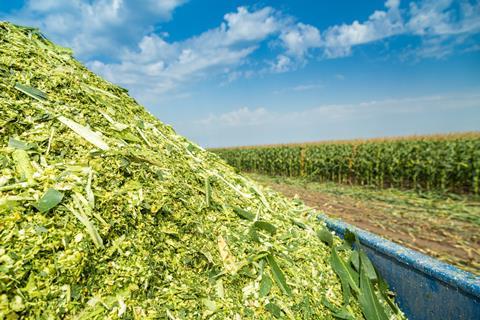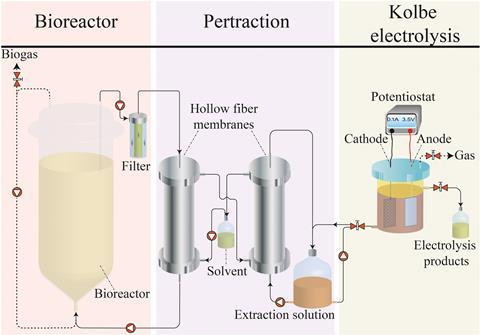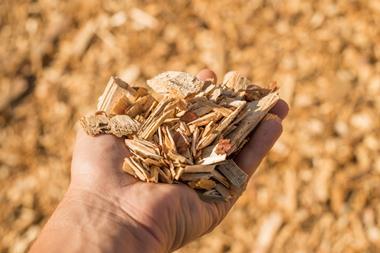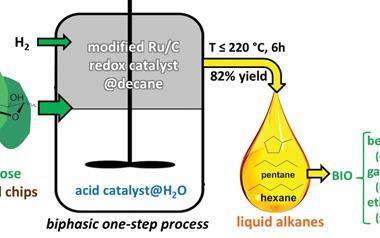Drop-in fuel production process clocks up sustainability points

Scientists in Germany and the US have developed a way to make fuel from biomass that uses excess renewable energy. Their bioelectrorefinery combines known techniques in a unique way to produce a biofuel very similar to diesel.
In the first stage of the process, microbes transform corn silage into carboxylic acids in a bioreactor. Next, a method called pertraction uses membranes to separate out carboxylic acids with carbon chains six to 12 carbon-atoms long, from the reactor medium. These medium-chain carboxylic acids are the ideal feedstock for the final stage of the process and the pertraction process means smaller carboxlic acids remain in the reaction broth so the microbes can elongate them further. The final stage electrochemically converts the carboxylic acids into energy dense alkanes, which can be used as a drop-in fuel.
Excess electricity from renewable sources such as wind farms or solar panels powers the final stage and means that energy generated on very sunny or windy days does not go to waste. And because the first stage produces carboxylic acids much slower than the last stage converts them into fuel, the whole concept accommodates the intermittent availability of this excess electricity.
Producing a drop-in fuel is particularly significant, as it can be directly substituted for petrol or diesel without major changes to existing engines, infrastructure or distribution networks. ‘We showed this on a scale that was not demonstrated before,’ says Falk Harnisch from the Helmholtz Centre for Environmental Research who led the work. ‘You could really see it and even smell it – it smells like diesel!’

‘This is the first report that demonstrates at lab-scale, a combination of two approaches in a sequential manner to present an integrated electrobiorefinery set up,’ says Deepak Pant, a bioelectrochemistry researcher at the Flemish Institute for Technological Research. ‘It should pave way for efforts towards developing an electrobiorefinery that is truly integrated with renewable electricity supply.’
References
This article is free to access until 7 November 2017
C Urban et al, Energy Environ. Sci., 2017, DOI: 10.1039/c7ee01303e












No comments yet